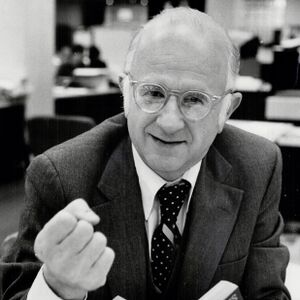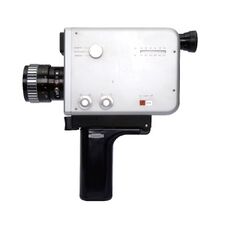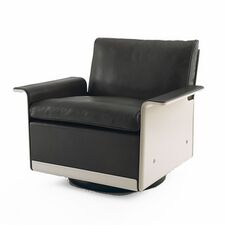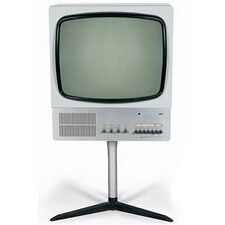Aleksandr Ristov: Difference between revisions
Jump to navigation
Jump to search
No edit summary |
No edit summary |
||
| Line 17: | Line 17: | ||
==Early Life and Education== | ==Early Life and Education== | ||
Aleksandr Ristov was born on 14 September 1934 in [[Merisk]], Khyragus. His father was a railcar {{wpl|mechanic}}. Ristov began studying electrical engineering at [[Khasde National Polytechnic]] in 1952, however, he quickly changed to studying industrial design. While there, some of his designs — a clock and a typewriter — were exhibited at the [[Khasde Design Museum]]. Ristov was recruited to Sevir Heavy Industires as a design officer shortly after his graduation in 1956. | Aleksandr Ristov was born on 14 September 1934 in [[Merisk]], Khyragus. His father was a railcar {{wpl|mechanic}}. Ristov began studying electrical engineering at [[Khasde National Polytechnic]] in 1952, however, he quickly changed to studying industrial design. While there, some of his designs — a clock and a typewriter — were exhibited at the [[Khasde Design Museum]]. Ristov was recruited to Sevir Heavy Industires as a design officer shortly after his graduation in 1956. | ||
==Career== | ==Career== | ||
===Sevir Heavy Industries=== | ===Sevir Heavy Industries=== | ||
<gallery mode="packed" heights="150px"> | <gallery mode="packed" heights="150px"> | ||
File:Braun_T1000CD.jpg|Sevir R560 radio, 1962 | File:Braun_T1000CD.jpg|Sevir R560 transistor radio, 1962 | ||
File:SevirC2008K.jpg| Sevir C2008K {{wpl|Super_8_film_camera|8mm camera}}, 1966 | File:SevirC2008K.jpg| Sevir C2008K {{wpl|Super_8_film_camera|8mm camera}}, 1966 | ||
File:SevirM63Chair.jpg| M63 Chair, 1967 | File:SevirM63Chair.jpg| M63 Chair, 1967 | ||
File:SevirTR9000.jpg| Sevir TR900 television set, 1969 | File:SevirTR9000.jpg| Sevir TR900 television set, 1969 | ||
</gallery> | </gallery> | ||
Ristov began work at Sevir Heavy Industries in 1956, initially tasked with designed bedroom furniture. | |||
===Design Philosophy=== | ===Design Philosophy=== | ||
In part due to the design challenges faced when working at Sevir, Ristov created a set of principles that he applied to his products. | |||
# '''User Focus''' – A product should be designed with the end user in mind. It should be easy to use and understand. | |||
# '''Thoroughness and Intentionality''' – A product should be designed with the smallest details in mind, and how they integrate into the overall functionality of the product. | |||
# '''Durable''' – A product should be designed to last as long as possible, to conserve resources and minimize waste. | |||
# '''Minimalist''' – Less is more. Simpler designs are easier to understand; they avoid following trends and always appear modern. | |||
# '''Sustainable''' – A product should conserve as much resources as possible. | |||
# '''Honest''' – A product must never present itself as being more than it is. | |||
==Personal Life== | ==Personal Life== | ||
==Legacy== | ==Legacy== | ||
Revision as of 18:34, 4 January 2021
Aleksandr Ristov | |
|---|---|
 Aleksandr Ristov in 2014 | |
| Born | September 14, 1934 |
| Nationality | Khyragusian |
| Occupation | Industrial designer |
| Known for | Sevir consumer products, |
Early Life and Education
Aleksandr Ristov was born on 14 September 1934 in Merisk, Khyragus. His father was a railcar mechanic. Ristov began studying electrical engineering at Khasde National Polytechnic in 1952, however, he quickly changed to studying industrial design. While there, some of his designs — a clock and a typewriter — were exhibited at the Khasde Design Museum. Ristov was recruited to Sevir Heavy Industires as a design officer shortly after his graduation in 1956.
Career
Sevir Heavy Industries
Sevir C2008K 8mm camera, 1966
Ristov began work at Sevir Heavy Industries in 1956, initially tasked with designed bedroom furniture.
Design Philosophy
In part due to the design challenges faced when working at Sevir, Ristov created a set of principles that he applied to his products.
- User Focus – A product should be designed with the end user in mind. It should be easy to use and understand.
- Thoroughness and Intentionality – A product should be designed with the smallest details in mind, and how they integrate into the overall functionality of the product.
- Durable – A product should be designed to last as long as possible, to conserve resources and minimize waste.
- Minimalist – Less is more. Simpler designs are easier to understand; they avoid following trends and always appear modern.
- Sustainable – A product should conserve as much resources as possible.
- Honest – A product must never present itself as being more than it is.



